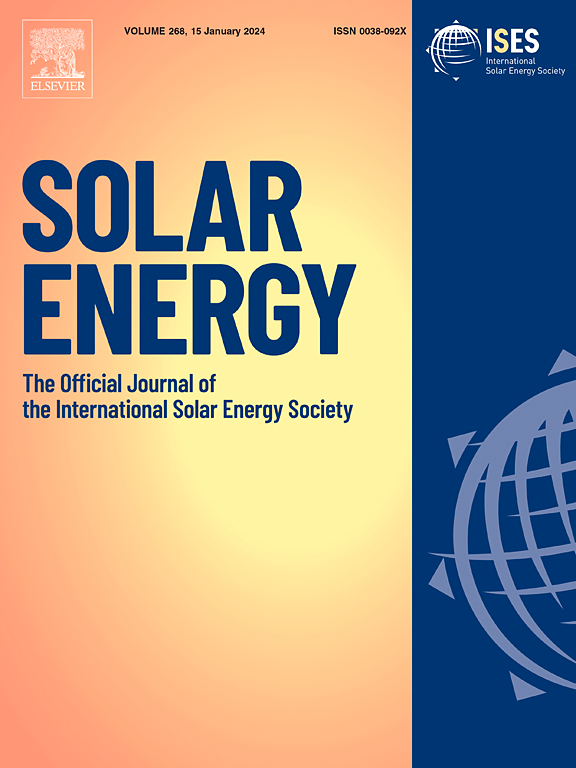Design methodology and performance analysis of a novel cooling system for dense array CPV receivers
IF 6
2区 工程技术
Q2 ENERGY & FUELS
引用次数: 0
Abstract
The electrical performance of a dense array concentrating photovoltaics (CPV) receiver is reduced by the increase of average temperature, and by a non-uniform temperature map due to a non-uniform illumination profile. This can be reversed by an effective cooling system that allows the CPV cells to operate at nominal temperatures, as well as by optimal cell control at electrical level. An analysis that considers the interdependence between thermal and electrical behavior is essential for obtaining realistic performance results. Hence, this study presents a methodology for analyzing the performance of a CPV receiver controlled with DC-DC converters which considers the interaction between thermal and electrical behavior. The methodology allows to optimize the design of a novel jet impingement cooling system used in the receiver. Additionally, the efficiency of three different sizes of CPV receivers cooled by two technologies, microchannels and jet impingement, are analyzed. The results show that maximum receiver efficiency did not coincide with the maximum heat extraction coefficient. The study confirmed that larger receiver sizes had lower efficiency due to the mismatch losses and resulted more efficient (0.6 %) using the proposed jet impingement cooling system compared to microchannels.
密集阵列 CPV 接收器新型冷却系统的设计方法和性能分析
密集阵列聚光光伏(CPV)接收器的电气性能会因平均温度的升高以及非均匀光照导致的非均匀温度图而降低。如果采用有效的冷却系统,使 CPV 电池在额定温度下工作,并对电池进行电气控制,就能扭转这种情况。要获得逼真的性能结果,就必须对热行为和电行为之间的相互依存关系进行分析。因此,本研究提出了一种方法,用于分析使用直流-直流转换器控制的 CPV 接收器的性能,该方法考虑了热行为和电行为之间的相互作用。通过该方法,可以优化接收器中使用的新型喷射撞击冷却系统的设计。此外,还分析了采用微通道和射流冲击两种技术冷却的三种不同尺寸的 CPV 接收器的效率。结果表明,最大接收器效率与最大热萃取系数并不一致。研究证实,由于错配损失,较大尺寸的接收器效率较低,而与微通道相比,使用建议的喷射撞击冷却系统效率更高(0.6%)。
本文章由计算机程序翻译,如有差异,请以英文原文为准。
求助全文
约1分钟内获得全文
求助全文
来源期刊

Solar Energy
工程技术-能源与燃料
CiteScore
13.90
自引率
9.00%
发文量
0
审稿时长
47 days
期刊介绍:
Solar Energy welcomes manuscripts presenting information not previously published in journals on any aspect of solar energy research, development, application, measurement or policy. The term "solar energy" in this context includes the indirect uses such as wind energy and biomass
 求助内容:
求助内容: 应助结果提醒方式:
应助结果提醒方式:


